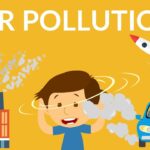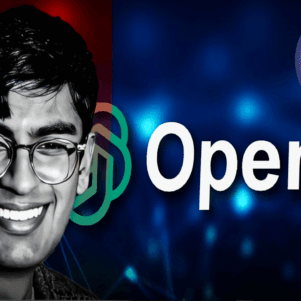Delhi’s pollution crisis has reached catastrophic levels, with the city frequently topping global charts for the worst air quality. Experts are now urging residents to consider leaving the national capital to safeguard their health.
Hospitals are overwhelmed, respiratory ailments are surging, and the long-term impacts on health could be deadly. This article delves into the causes, consequences, and potential solutions to Delhi’s worsening air quality, providing a research-backed overview of the dangers posed by the city’s toxic air.
The Current State of Delhi’s Air Pollution
According to data from the Central Pollution Control Board (CPCB), Delhi’s Air Quality Index (AQI) has consistently hovered in the “severe” category, with PM2.5 levels often exceeding 500 µg/m³—more than 20 times the World Health Organization’s safe limit of 25 µg/m³.
During the winter months, pollution worsens due to crop stubble burning in neighboring states, coupled with vehicle emissions, industrial activity, and construction dust. The smog enveloping the city has reduced visibility and rendered outdoor activities hazardous.
Hospitals Overwhelmed
Delhi’s healthcare infrastructure is reeling under pressure. Emergency rooms are crowded with patients suffering from respiratory distress, chronic obstructive pulmonary disease (COPD), asthma, and cardiovascular problems.
Children and the elderly are particularly vulnerable, with pediatric wards and ICUs running at full capacity. Many hospitals are running out of essential equipment like oxygen cylinders and nebulizers, further exacerbating the crisis.
The Health Impacts of Prolonged Exposure to Toxic Air
Respiratory Diseases
Particulate matter (PM2.5 and PM10) penetrates deep into the lungs and bloodstream, leading to inflammation, reduced lung function, and chronic respiratory diseases like bronchitis, emphysema, and asthma.
Prolonged exposure can result in permanent lung damage, particularly in children whose lungs are still developing.
Cardiovascular Problems
Airborne pollutants can increase the risk of heart attacks, strokes, and hypertension. Studies have shown that long-term exposure to PM2.5 is directly linked to an increased prevalence of ischemic heart disease.
Neurological and Cognitive Decline
Emerging research suggests a link between air pollution and neurodegenerative diseases like Alzheimer’s and Parkinson’s. High pollution levels can also impair cognitive development in children and trigger anxiety, depression, and other mental health issues.
Cancer
Carcinogenic compounds like polycyclic aromatic hydrocarbons (PAHs) and heavy metals found in polluted air significantly raise the risk of lung cancer. Even non-smokers living in Delhi face a heightened risk due to prolonged exposure to these toxins.
Premature Deaths
According to a report by The Lancet, air pollution contributes to over 1.6 million deaths annually in India. In Delhi alone, thousands of premature deaths are linked to diseases caused or worsened by pollution.
How Pollution Can Kill: Mechanisms of Harm
Oxygen Deprivation: Pollutants like carbon monoxide bind with hemoglobin more effectively than oxygen, reducing the oxygen supply to vital organs.
Systemic Inflammation: Pollutants cause chronic inflammation, damaging tissues and increasing the risk of autoimmune diseases.
Immune Suppression: Long-term exposure to pollutants weakens the immune system, making individuals more susceptible to infections, including pneumonia and tuberculosis.
Impact on Pregnancies: High pollution levels can lead to miscarriages, low birth weights, and developmental issues in newborns.
Why Experts Are Advising Citizens to Leave
Several experts, including pulmonologists and environmental scientists, have issued dire warnings. Staying in Delhi, they argue, is akin to smoking several packs of cigarettes daily. For vulnerable groups like children, pregnant women, and individuals with pre-existing conditions, relocation might be the only way to avoid life-threatening health issues.
Dr. Arvind Kumar, a noted lung surgeon, stated, “Delhi’s air is not just unhealthy; it is poisonous. We are seeing irreversible lung damage in children as young as 10. If this continues, we are looking at a public health disaster.”
Economic and Social Impacts of the Crisis
Healthcare Costs
The economic burden of treating pollution-related diseases is immense. Families are forced to spend exorbitant amounts on medical bills, while the government allocates significant resources to tackle the fallout.
Productivity Loss
Workers afflicted by respiratory and cardiovascular ailments report lower productivity, leading to economic losses for businesses and the city at large.
Outmigration
The pollution crisis is driving a wave of outmigration. Affluent families are moving to less polluted cities or investing in second homes elsewhere. This “pollution exodus” risks deepening economic inequality in the city.
The Need for Immediate Action
Policy Interventions
The government has launched several initiatives, such as the Graded Response Action Plan (GRAP), to curb pollution. However, these measures often fall short due to weak enforcement. A more robust approach is needed, including stricter vehicle emission norms, phasing out coal-fired power plants, and imposing heavy penalties on industries violating pollution norms.
Public Awareness
Citizens can also play a role by adopting cleaner technologies, using public transportation, and avoiding the use of fireworks. However, individual efforts must be supported by systemic changes.
Technological Solutions
Investments in technologies like smog towers, air purifiers, and bio-decomposers for stubble management can offer temporary relief. Long-term solutions require transitioning to renewable energy and building green infrastructure.
Can Delhi Be Saved?
While experts urge evacuation as an immediate measure for those most at risk, the larger battle lies in making Delhi livable again. Without concerted efforts from policymakers, industries, and citizens, the city risks becoming uninhabitable.
Delhi’s pollution crisis is a stark reminder of the urgent need for environmental justice. The health and lives of millions hang in the balance, and unless drastic measures are taken, the capital may face a mass exodus, leaving behind a city struggling to breathe.
The choice is clear: act now, or face an irreversible catastrophe.









